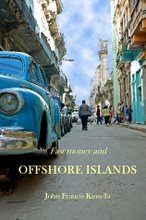A Little Political Agitation
I wrote this article last summer for Charles Hugh Smith in
July 17, Hendaye, Basque Country. As I sit here the outside temperature hovers between 95 and
I normally spend two or three months a year here, relaxing by the sea, walking in the nearby green hills and mountains, eating the local specialities: tapas, Jamon Iberico and drinking Rioja wine. Recently, however, I cannot but help noticing that things are changing, and changing fast, faster than I could have ever before imagined.
In the background a continuous TV news channel reports alarming news from the Lebanon, which, perhaps strangely, does not seem to concern the tens of thousands of holiday makers sunning themselves on the long sandy beaches of Hendaye, that is apart from the fact that here the price of gasoline has risen to almost 8 dollars a gallon at the pump, a price that would cause a revolution in California.
Hendaye is a town with a population of approximately 15,000 permanent residents during the most part of the year, but which rises to about 80,000 at the peak of the summer. Locally, property prices have now reached astronomical heights, rivalling those of
Why such property prices in Hendaye, this small unimportant town in the south west extremity of
In the space of ten years or so the Spanish population in Hendaye has risen to reach almost one third of the total population, a not unwelcome change to a previously pleasant but economically fading town. This situation has led to galloping property speculation and the development of infrastructure projects to meet the needs of the burgeoning population. This infrastructure need includes an ecologically doubtful, large scale, urban garbage incinerator just a few miles to the south of Hendaye and the Spanish city of
The
Even the small park with its hundred year old plane trees I can see across the road from me, bequeathed in trust to the town by its long defunct owners, is in the course of being transformed into a superfluous play park, with more than its fair share of concrete. On a much larger scale the one hundred and fifty year old Paris-Madrid railroad line that runs through a deep cutting in the centre of the town is in the course of being covered by a monumental concrete platform, three or four hundred yards long by almost one hundred wide, a construction site more in line with an airport terminal building than the foundations for a 450 apartments condo, complete with shops and a parking facility, conceived on a totally speculative basis. This will increase the total number of residential units in Hendaye by not far off ten percent. And this is just one of the projects!
Our elected representatives tell us all these changes are needed for growth, for jobs, to encourage development. I ask myself what will they do for an encore when the current projects are completed in a year or two. Will the cycle start again? Then again and again? Where will it led us? Do we need these changes, changes that indirectly influence the course of events in other parts of the world, the struggle for resources, oil, minerals, water, space, changes in the climate, and a future when we will see more and more summers with temperatures in the order of
copyright © 2006 John Francis Kinsella. All rights reserved in all media.






